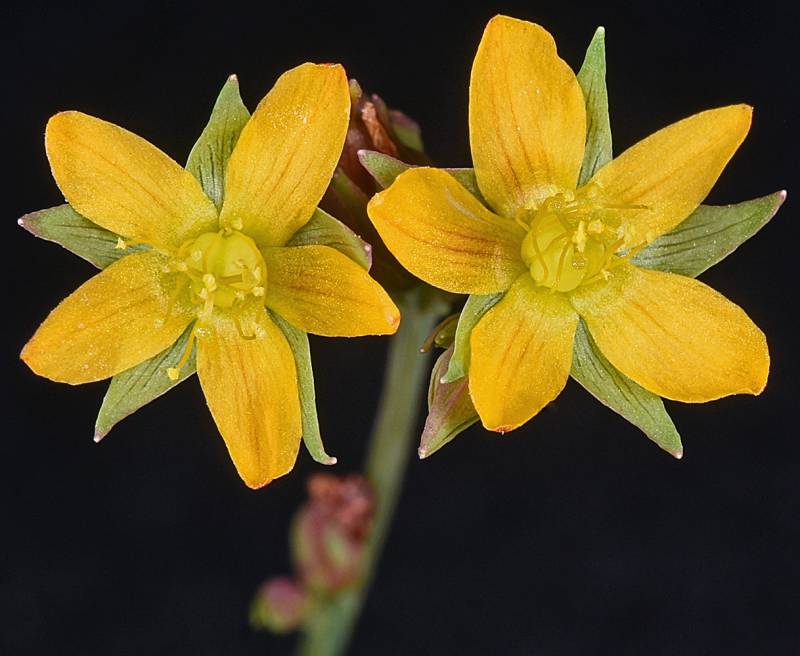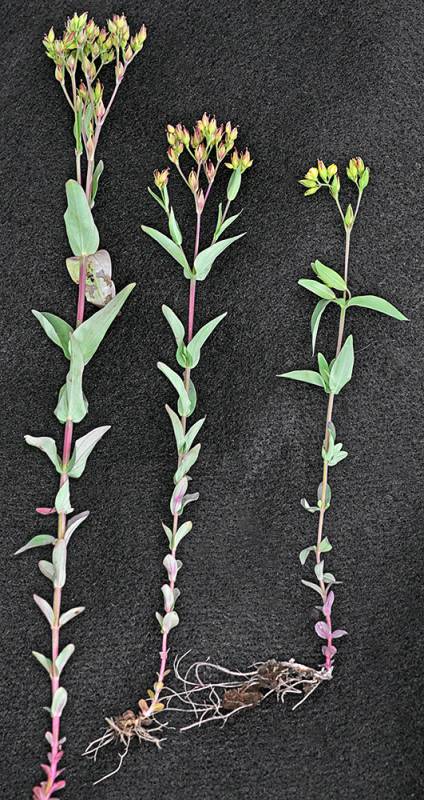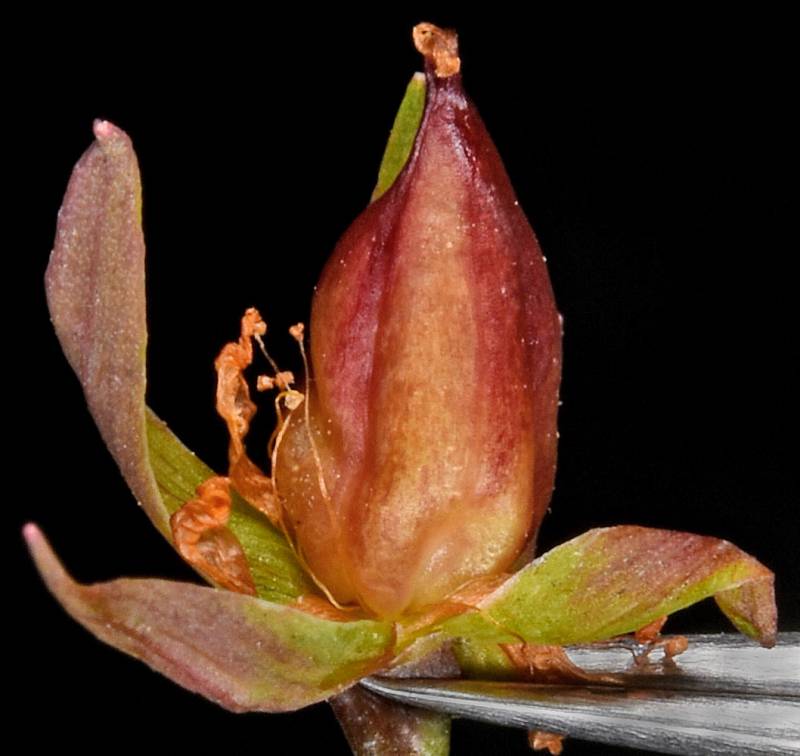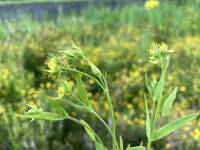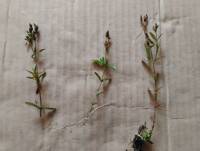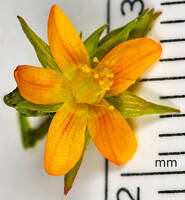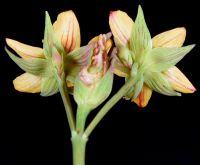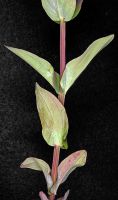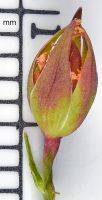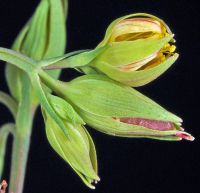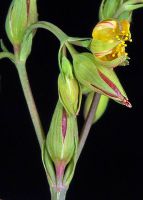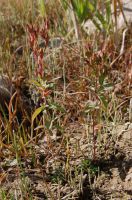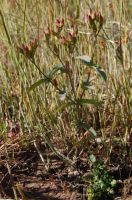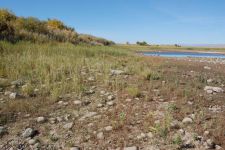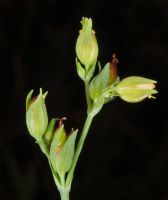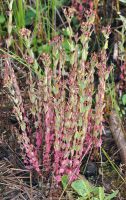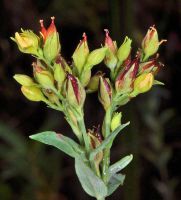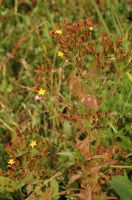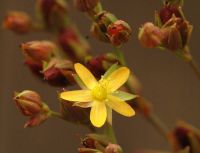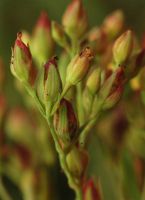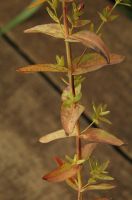Distribution: Occurring on both sides of the Cascades crest in Washington; British Columbia to Oregon, east to the Atlantic Coast.
Habitat: Peatlands, shores, damp sand, and cranberry farms.
Flowers: July-September
Origin: Both native and introduced from eastern North America
Growth Duration: Perennial
Conservation Status: Sensitive in Washington (WANHP)
Pollination: Bumblebees, bees, flies, wasps
Perennial from short, leafy rhizomes, the stems upright, 1-5 dm. tall, simple or branched above.
Leaves opposite, sessile, lanceolate to oblong, rounded, 1-3.5 cm. long, 5- to 7-nerved.
Inflorescence of terminal cymes with small, linear bracts; sepals 5, lanceolate, 4-7 mm. long; petals 5, yellow, about equal to the sepals; stamens 15-35, the filaments almost capillary, distinct; styles 3, short.
Capsule 3-celled.
Publication: Memoirs of the Torrey Botanical Club 5(15): 225. 1894.
PNW Herbaria: Specimen records of Hypericum majus in the Consortium of Pacific Northwest Herbaria database
WA Flora Checklist: Hypericum majus checklist entry
OregonFlora: Hypericum majus information
E-Flora BC: Hypericum majus atlas page
CalPhotos: Hypericum majus photos

